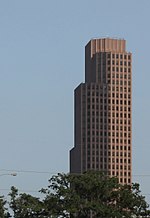West End Park (Houston)

West End Park was a baseball park in Houston from 1905 to the 1940s. It was the primary ballpark for the city when it was constructed, and the city's first venue for Negro Major League games. From 1909 through 1910 and again in 1915, it also served as the spring training facility of the St. Louis Browns (known today as the Baltimore Orioles) as well as the 1914 New York Yankees of the American League and the 1906 through 1908 St. Louis Cardinals of the National League in Major League Baseball. After its use by its primary tenant, the Houston Buffaloes of the Texas League, the ballpark was sold to what is now known as the Houston Independent School District for its use until it was demolished. Contrary to its name, the ballpark's location was not in West End, Houston, as that area had not yet been specifically designated as "West End", and the current municipal recreational park of the same has no relation to the ballpark. Instead, West End Park was located in the freedmen's town area of the Fourth Ward, with its entrance at Andrews and Heiner Streets. It was bounded by Andrews Street (north, third base line), Heiner Street (west, first base line), and Howe Street (east, left field fence). Behind the right field fence, to the south, was the inverted-V-shaped intersection of Jefferson Street and Bagby Street. The location was less than a mile straight west of the eventual site of Minute Maid Park. Today, the Interstate 45 "Pierce Elevated" passes over the area where the ballpark was, from Andrews Street to the Bagby Street exit.
Excerpt from the Wikipedia article West End Park (Houston) (License: CC BY-SA 3.0, Authors, Images).West End Park (Houston)
Pierce Elevated, Houston
Geographical coordinates (GPS) Address Nearby Places Show on map
Geographical coordinates (GPS)
| Latitude | Longitude |
|---|---|
| N 29.75493 ° | E -95.37443 ° |
Address
Pierce Elevated
Pierce Elevated
77002 Houston
United States
Open on Google Maps










